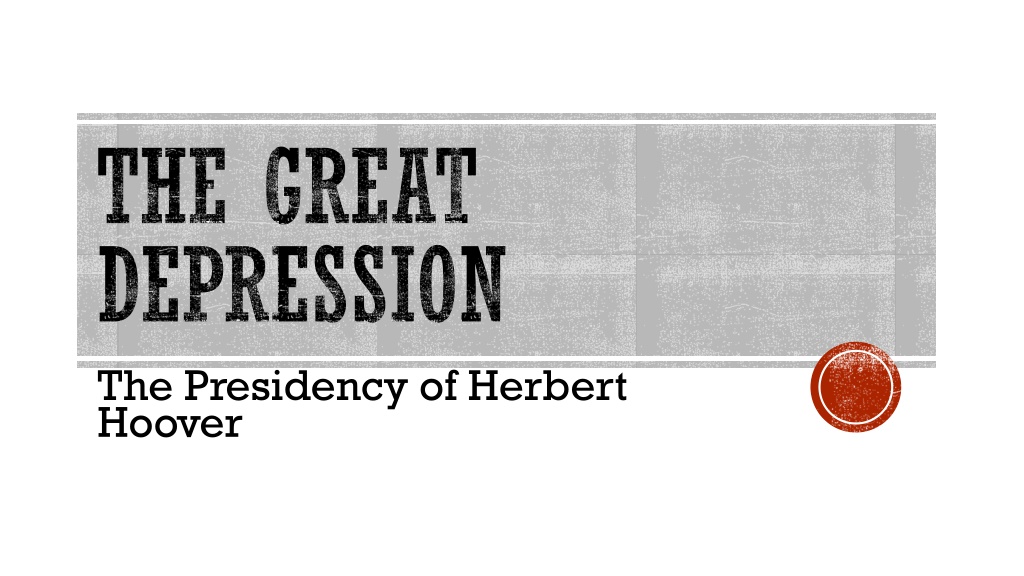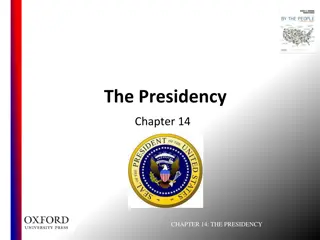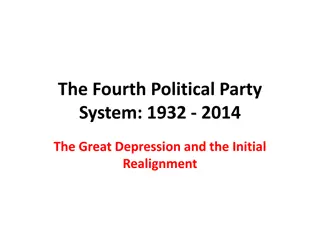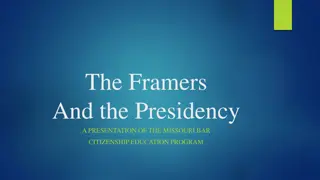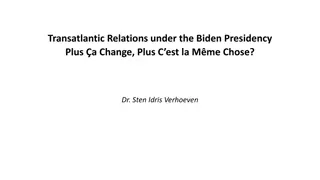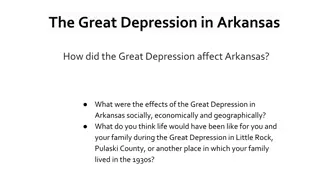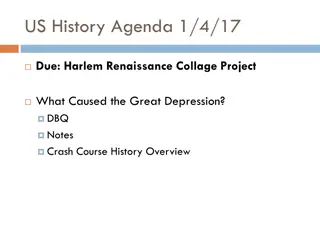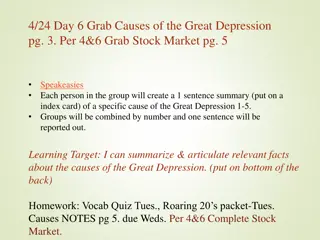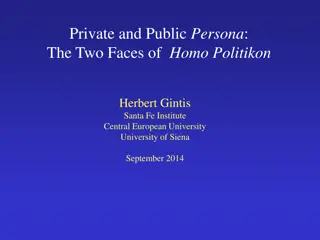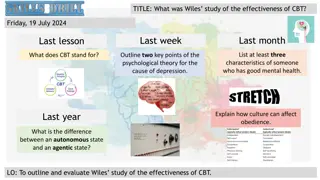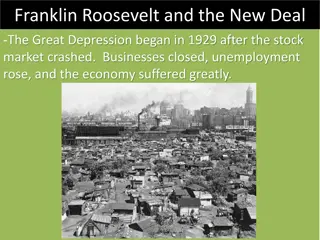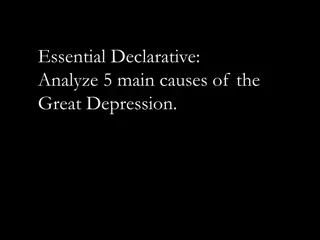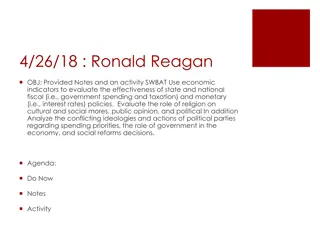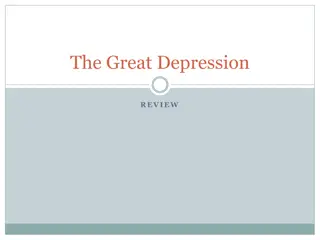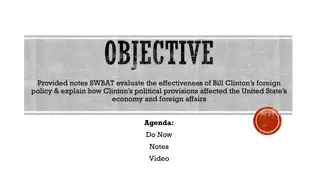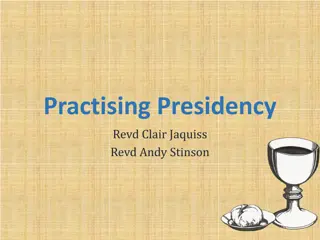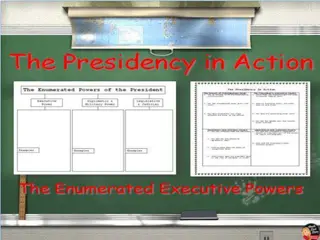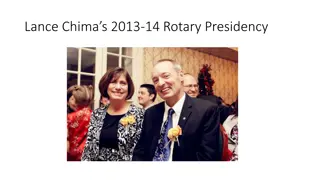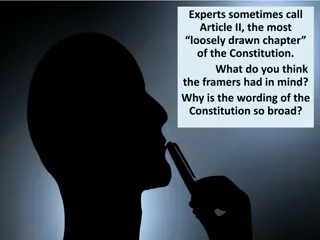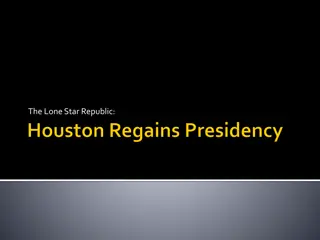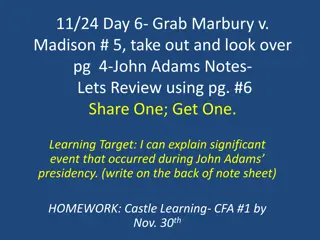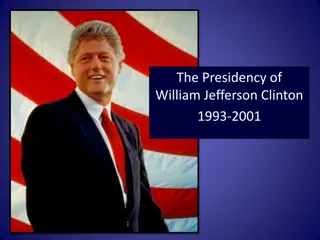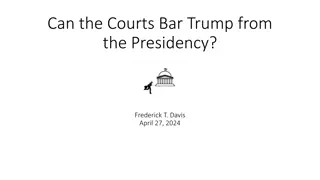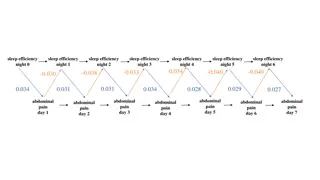The Great Depression and Herbert Hoover's Presidency
Herbert Hoover's presidency during the Great Depression was marked by his belief in individualism and limited government intervention. Despite his initial stance against direct government aid, Hoover eventually established the Reconstruction Finance Corporation to provide assistance during the economic crisis. His philosophy of rugged individualism and the concept of the associative state are key aspects of his approach to governance during this tumultuous period.
Download Presentation

Please find below an Image/Link to download the presentation.
The content on the website is provided AS IS for your information and personal use only. It may not be sold, licensed, or shared on other websites without obtaining consent from the author. Download presentation by click this link. If you encounter any issues during the download, it is possible that the publisher has removed the file from their server.
E N D
Presentation Transcript
THE GREAT DEPRESSION The Presidency of Herbert Hoover
EARLY MONTHS OF HOOVER ADMINISTRATION Elected in 1929 Hoover was a millionaire and claimed that anyone not only can be rich, but ought to be rich Warned of the dangers of a large and activist federal government, but also criticized the self- serving greed of large corporations. Was the first of two presidents to donate their salaries. (President Kennedy, was the second)
HOOVERS PHILOSOPHY: Herbert Hoover came to the presidency with a core set of beliefs he had formed over a long career in business and government service. He had served in the Harding and Coolidge administrations and shared many of their ideas about government s role in business, favoring as little government intervention as possible. Laissez-faire Hoover believed unnecessary government threatened prosperity and the spirit of the American people. A key part of this spirit was something he called rugged individualism. Hoover didn t reject government oversight or regulation of certain businesses or think businesses should do exactly as they pleased, but he thought it was important not to destroy people s belief in their own responsibility and power.
THE ASSOCIATIVE STATE According to Hoover, individualism did not rule out cooperation: The Hoover Dam The Associative State The building of the Hoover Dam demonstrated Hoover s beliefs in business and government. Hoover thought businesses should form voluntary associations to make the economy more fair and efficient. The dam harnessed the Colorado River to provide electricity and a safe, reliable water supply to parts of seven states. Skilled government specialists would then cooperate with the associations. Hoover called this the associative state. The federal government provided the funding for the project, which was approved in the 1920s and built in the 1930s. As Coolidge s secretary of commerce, and as President, Hoover put his beliefs into action, calling together meetings of business leaders and experts to discuss ways of achieving national goals. A group of six independent companies joined together to design and construct it.
HOOVERS RESPONSE TO THE GREAT DEPRESSION Hoover s core beliefs that government should not provide direct aid, but find ways to help people help themselves shaped his presidency. Direct Action Ideas and Beliefs Businesses cut jobs and wages, and state and local governments cut programs and laid off workers. Before the market crash, Hoover tried to help farmers by strengthening farm cooperatives. Cooperative: an organization owned and controlled by its members, who work together for a common goal The crisis persuaded Hoover to go against his beliefs and establish the Reconstruction Finance Corporation in 1932, a program that provided $2 billion in direct government aid to banks and institutions. After the crash, Hoover continued to believe in voluntary action, and he urged business and government leaders not to lay off workers, hoping that their cooperation would help the economic crisis pass. Later that year he asked Congress to pass the Federal Home Loan Bank, a program to encourage home building.
THE SMOOT-HAWLEY TARIFF ACT The Act One of Hoover s major efforts to address the economic crisis was the 1930 Smoot-Hawley Tariff Act. Tariffs are taxes on imported goods that raise their cost, making it more likely that American purchasers buy cheaper American goods. The Effects The Smoot-Hawley Tariff Act was a disaster. Originally designed to help farmers, it was expanded to include a large number of manufactured goods. The high tariff rates were unprecedented. When European nations responded with tariffs on American goods, international trade fell dramatically. By 1934 trade was down two thirds from its 1929 level.
THE NATION RESPONDS TO HOOVER Questions of Credibility Questions of Compassion Hoover eventually saw the limitations of his ideals and pushed for some direct relief, but his optimistic claims about the economy undermined his credibility with voters. Many Americans came to question Hoover s compassion. As economic conditions grew worse, his unwillingness to consider giving direct relief to the people became hard for most Americans to understand. Early on, when millions lost their jobs, he said the nation s basic economic foundation was sound. When Hoover finally broke his stated beliefs and pushed for programs like the Reconstruction Finance Corporation, people wondered why he was willing to give billions of dollars to banks and businesses but not to individuals. Just a few months after the crash he announced I am convinced we have passed the worst, and he spoke glowingly about the relief efforts. Millions of Americans did not share Hoover s viewpoint.
THE BONUS MARCHERS In May 1932 some World War I veterans set up camp near the capital. The men were in Washington to pressure the federal government to pay a veteran s bonus a cash award they were promised for their war service. The bonus was not due for many years, but the men needed the money. Congress refused to meet the demands of these bonus marchers, and some left. A core group remained, including women and children. In July, as police and U.S. soldiers began clearing the area of veterans, violence erupted and the camp went up in flames, injuring hundreds. Hoover did not want to pay the bonus because he was concerned about balancing the budget. However, many Americans were greatly disturbed by the sight of soldiers using weapons against homeless veterans. The public s opinion of Hoover fell even more.
THE RISE OF HOOVERVILLES As the Depression worsened and millions of urban and rural families lost their jobs and depleted their savings, they also lost their homes. Desperate for shelter, homeless citizens built shantytowns in and around cities across the nation. These camps came to be called Hoovervilles, longtime newspaper reporter Charles Michelson (1868-1948) is credited with coining the term Hooverville shanties were constructed of cardboard, tar paper, glass, lumber, tin and whatever other materials people could salvage. Some homes were not buildings at all, but deep holes dug in the ground with makeshift roofs laid over them to keep out inclement weather. Some of the homeless found shelter inside empty conduits and water mains. Whenever possible, Hoovervilles were built near rivers for the convenience of a water source. For example, in New York City, encampments sprang up along the Hudson and East rivers. Some Hoovervilles were dotted with vegetable gardens, and some individual shacks contained furniture a family had managed to carry away upon eviction from their former home. However, Hoovervilles were typically grim and unsanitary. They posed health risks to their inhabitants as well as to those living nearby, but there was little that local governments or health agencies could do. Hooverville residents had nowhere else to go, and public sympathy, for the most part, was with them. Even when Hoovervilles were raided by order of parks departments or other authorities, the men who carried out the raids often expressed regret and guilt for their actions. More often than not, Hoovervilles were tolerated. Although a common factor among Hooverville residents was unemployment, inhabitants took any work that became available, often laboring at such backbreaking, sporadic jobs as fruit picking or packing. Writer John Steinbeck (1902-68) featured a family who lived in a California Hooverville and sought farm work in his Pulitzer Prize-winning novel The Grapes of Wrath, which was first published in 1939.
THE VOTERS REACT Trying to balance the budget, Hoover pushed for and signed a large tax increase in 1932. This move was highly unpopular, because voters wanted more government spending to aid the poor. The 1930 Congressional election provided early signs that the public was fed up with President Hoover. Democrats finally won the majority of seats in the House of Representatives and made gains in the Senate. By the 1932 presidential election, it seemed certain Hoover would lose the race. The Great Depression showed few signs of ending, and Hoover s ability to influence people and events was nearly gone. Hoover (R) vs. Franklin D. Roosevelt (D) In the end, Hoover had the impossible task of defending failed policies and strategies. Instead of campaigning, Hoover spent time begging Roosevelt to not do anything too radical.
ELECTION OF 1932 Election of 1932 Candidates Electoral Vote Popular Vote Party FDR Democratic 472 22,821,857 Herbert C. Hoover Republican 59 15,761,845 Norman M. Thomas Socialist 0 881,951 William Z. Foster Communist 0 102,785
